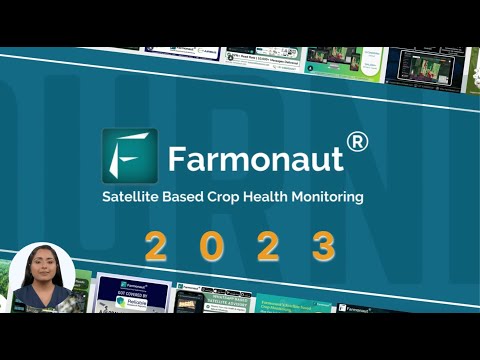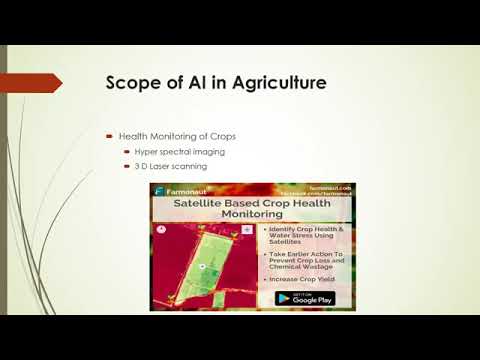Federal Government Shutdown Looms: Impact on Minnesota Farmers and Rural Health

As we navigate the complex landscape of American politics, a looming federal government shutdown threatens to cast a long shadow over Minnesota’s agricultural sector and rural communities. The potential impact of this shutdown extends far beyond the halls of Washington, reaching into the heartland of our nation and affecting the livelihoods of countless farmers and rural residents. In this comprehensive analysis, we’ll explore the multifaceted consequences of a government shutdown on Minnesota’s agricultural industry, rural health, and the broader economic implications for our state and nation.
“Congressional approval ratings during government shutdown debates can drop as low as 10-20%, reflecting public frustration.”
The Looming Shutdown: A Crisis in the Making
As Congress grapples with a contentious spending bill, the specter of a federal government shutdown hangs over the nation’s capital. This high-stakes political drama has far-reaching implications, particularly for Minnesota’s agricultural community and rural health sector. The inability to pass a comprehensive government spending bill has led to a series of short-term continuing resolutions, creating an atmosphere of uncertainty and anxiety among farmers and rural residents alike.
- The current continuing resolution is set to expire, potentially triggering a shutdown
- Key agricultural programs and rural health initiatives face funding interruptions
- Minnesota farmers brace for potential delays in crucial USDA services
The impact of a federal government shutdown on Minnesota’s agricultural sector cannot be overstated. From delayed farm bill legislation to interrupted agricultural funding, the consequences could be severe and long-lasting. As we delve deeper into this issue, it’s crucial to understand the intricate web of federal programs and services that support our state’s farmers and rural communities.
Farm Bill Legislation: Caught in the Crossfire
The farm bill, a cornerstone of U.S. agricultural policy, faces significant hurdles in the current political climate. With the potential shutdown looming, the prospects for passing a new farm bill this year have dimmed considerably. This leaves Minnesota farmers in a state of limbo, relying on outdated legislation that may not adequately address their current needs.
- The current farm bill expires this year, requiring reauthorization or extension
- Partisan gridlock threatens to delay crucial updates to agricultural programs
- Minnesota farmers may face uncertainty in crop insurance, conservation, and nutrition programs
As we navigate these uncertain waters, it’s important to remember that technology can play a crucial role in helping farmers adapt to changing circumstances. Platforms like Farmonaut offer innovative solutions for farm management and crop monitoring, potentially mitigating some of the challenges posed by legislative uncertainty.
Tariffs and Trade: A Double-Edged Sword
The ongoing debate over tariffs and trade policies adds another layer of complexity to the challenges facing Minnesota farmers. The potential government shutdown could exacerbate existing trade tensions, impacting crucial overseas markets for agricultural products.
- Uncertainty surrounding tariff policies may disrupt international trade relationships
- Minnesota farmers face potential loss of market share in key export destinations
- Rising costs of imported agricultural inputs could squeeze farm profitability
In this volatile trade environment, farmers need reliable tools to monitor market conditions and make informed decisions. The Farmonaut API offers valuable data insights that can help agricultural businesses navigate these challenging times.
Rural Health Concerns: A Growing Crisis
The potential government shutdown poses significant risks to rural health initiatives in Minnesota. Many rural communities rely heavily on federal funding to maintain essential health services, and a prolonged shutdown could have dire consequences.
- Critical rural health programs may face funding interruptions
- Access to healthcare services in remote areas could be compromised
- Telemedicine initiatives, crucial for rural residents, may experience setbacks
As we consider the potential impact on rural health, it’s worth noting that technology can play a vital role in bridging healthcare gaps. While not directly related to healthcare, platforms like Farmonaut demonstrate how innovative tech solutions can address critical needs in rural communities. You can explore these solutions further through the Farmonaut Android app or the iOS version.

The Economic Ripple Effect
The potential government shutdown’s impact extends beyond agriculture and rural health, affecting the broader Minnesota economy. The interplay between federal spending, tax policies, and local economies creates a complex web of economic consequences.
“A federal government shutdown could delay over $1 billion in USDA program funding for Minnesota farmers.”
- Delayed federal contracts and grants may slow economic activity in rural areas
- Uncertainty surrounding tax policies could impact investment decisions
- Local businesses that rely on agricultural spending may face reduced demand
In these challenging times, it’s crucial for farmers and rural businesses to explore all available resources. The Farmonaut affiliate program offers an opportunity for individuals to earn while helping farmers access valuable technological solutions.
Immigration Policy: A Key Factor in Agricultural Labor
The ongoing immigration policy debate in Washington has significant implications for Minnesota’s agricultural sector. Many farms rely on immigrant labor, and uncertainty surrounding immigration policies could exacerbate existing labor shortages.
- Potential changes to guest worker programs may impact farm labor availability
- Uncertainty could discourage seasonal workers from coming to Minnesota
- Labor shortages may lead to increased production costs for farmers
As labor challenges persist, farmers are increasingly turning to technology to improve efficiency. Tools like Farmonaut’s satellite-based crop monitoring can help optimize resource allocation and potentially mitigate some labor-related issues.
The Political Landscape: Navigating Partisan Waters
The potential government shutdown is deeply rooted in the complex political dynamics of Washington. Understanding these dynamics is crucial for predicting potential outcomes and their impact on Minnesota’s agricultural sector.
- Partisan disagreements over spending priorities drive the shutdown threat
- Congressional approval ratings fluctuate as the public reacts to the ongoing debate
- Minnesota’s senators face difficult decisions balancing state interests with party positions
In this politically charged environment, it’s more important than ever for farmers to stay informed and engaged. Utilizing data-driven tools like those offered by Farmonaut can help agricultural businesses make sound decisions despite political uncertainty.
Local Impact: Minnesota Communities on the Front Lines
While the shutdown debate rages in Washington, its effects will be felt most acutely in local Minnesota communities. From delayed infrastructure projects to interrupted social services, the potential shutdown could have far-reaching consequences at the local level.
- Federal funding for local projects may be frozen, delaying critical improvements
- Social services relying on federal support could face interruptions
- Local economies may experience slowdowns as federal spending decreases
In these challenging times, community resilience becomes paramount. Innovative solutions, such as those offered by agritech companies like Farmonaut, can play a role in helping local communities adapt and thrive despite federal uncertainty.
The Role of Technology in Mitigating Shutdown Impacts
As we navigate the potential challenges of a government shutdown, it’s important to recognize the role that technology can play in helping farmers and rural communities adapt. Innovative solutions can provide valuable tools for managing resources, monitoring crops, and making informed decisions in uncertain times.
- Satellite-based crop monitoring can help optimize resource allocation
- AI-driven advisory systems offer personalized guidance for farm management
- Data analytics tools can help farmers navigate market fluctuations
Platforms like Farmonaut exemplify how technology can empower farmers to face challenges head-on. By leveraging advanced satellite imagery and AI algorithms, these tools provide crucial insights that can help mitigate some of the impacts of a potential government shutdown.
Looking Ahead: Preparing for Uncertainty
As Minnesota farmers and rural communities brace for the potential impact of a federal government shutdown, it’s crucial to focus on preparedness and resilience. While the situation in Washington remains fluid, there are steps that individuals and businesses can take to mitigate potential risks.
- Diversify income streams to reduce reliance on potentially affected federal programs
- Stay informed about the latest developments and their potential impacts
- Explore technological solutions that can enhance efficiency and decision-making
- Engage with local and state representatives to voice concerns and seek support
By taking a proactive approach and leveraging available resources, Minnesota’s agricultural sector can better weather the storm of political uncertainty. Tools like those offered by Farmonaut can play a crucial role in this preparation, providing valuable insights and data-driven solutions.
Conclusion: Navigating Choppy Waters
The looming federal government shutdown presents significant challenges for Minnesota’s farmers and rural communities. From delayed farm bill legislation to potential disruptions in rural health services, the impacts could be far-reaching and long-lasting. However, by staying informed, leveraging technological solutions, and working together, our state’s agricultural sector can navigate these choppy waters.
As we continue to monitor the situation in Washington, it’s clear that the resilience and innovation of Minnesota’s farming community will be put to the test. By embracing new technologies, diversifying strategies, and maintaining a united front, we can work to mitigate the potential impacts of a government shutdown and emerge stronger on the other side.
In these uncertain times, tools like Farmonaut offer a beacon of hope, demonstrating how technology can empower farmers to make informed decisions and optimize their operations. As we face the challenges ahead, let’s remember that innovation and adaptability have always been hallmarks of American agriculture – qualities that will serve us well in the days to come.
Table: Impact of Federal Government Shutdown on Minnesota Agriculture
| Agricultural Aspect | Current Status | Potential Impact of Shutdown | Estimated Economic Impact |
|---|---|---|---|
| Farm Bill Funding | Awaiting reauthorization | Delays in program implementation, uncertainty for farmers | $500 million – $1 billion |
| Crop Insurance | Operational | Potential delays in claims processing, policy renewals | $100 – $200 million |
| USDA Loan Processing | Active | Suspension of new loan applications, delays in approvals | $50 – $100 million |
| Commodity Price Supports | In effect | Potential interruption in payments, market instability | $200 – $400 million |
| Rural Health Programs | Operational | Funding delays, potential service interruptions | $75 – $150 million |
| Agricultural Research | Ongoing | Project delays, potential loss of data continuity | $25 – $50 million |
FAQ: Federal Government Shutdown and Minnesota Agriculture
Q: How long could a potential government shutdown last?
A: The duration of a government shutdown can vary greatly, from a few days to several weeks. The longest shutdown in U.S. history lasted 35 days in 2018-2019.
Q: Will farmers still receive their federal subsidy payments during a shutdown?
A: Essential payments may continue, but new applications or changes to existing subsidies could be delayed. It’s best to check with the USDA for specific program statuses.
Q: How will a shutdown affect crop insurance claims?
A: While existing policies remain in effect, there may be delays in processing new claims or policy changes. Farmers should maintain thorough records during any shutdown period.
Q: Can farmers still access USDA data and reports during a shutdown?
A: Many USDA websites and data services may be unavailable or not updated during a shutdown. Alternative sources of agricultural data, such as Farmonaut’s satellite-based monitoring, could become crucial during this time.
Q: How might a shutdown impact rural healthcare services?
A: Rural health programs relying on federal funding may face delays or interruptions. This could affect everything from community health centers to telehealth initiatives.
Q: Will agricultural research be affected by a government shutdown?
A: Non-essential research projects at federal facilities may be paused during a shutdown, potentially causing delays and disruptions in ongoing studies.
As we navigate these uncertain times, it’s crucial for farmers and rural communities to stay informed and explore all available resources. Technologies like those offered by Farmonaut can provide valuable insights and support, helping to bridge gaps that may arise during a government shutdown.
Explore Farmonaut’s innovative solutions:
Earn With Farmonaut: Affiliate Program
Earn 20% recurring commission with Farmonaut’s affiliate program by sharing your promo code and helping farmers save 10%. Onboard 10 Elite farmers monthly to earn a minimum of $148,000 annually—start now and grow your income!
Farmonaut Subscriptions
As we face the challenges posed by a potential federal government shutdown, it’s clear that Minnesota’s agricultural sector will need to draw on its strengths of resilience, innovation, and community. By staying informed, leveraging technology, and working together, we can navigate these uncertain times and emerge stronger on the other side. Remember, resources like Farmonaut are here to support our farming community with cutting-edge solutions for crop monitoring and farm management. Stay tuned for further updates as the situation in Washington continues to evolve.








